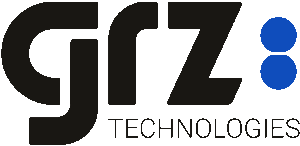Electrolyzer technology for water electrolysis is rapidly developing, with an increasing number of models and manufacturers emerging in the market. Advancements in technology and a rising demand for efficient hydrogen production methods drive this growth. These are also due to the growing understanding that renewable electricity generation creates surplus. This surplus needs to be processed (see, for example, our article on the topic here).
Overview of technologies #
Today, a growing range of electrolyzers is available. The different technologies offer unique features and benefits, but also have disadvantages. The table below provides a simple comparative overview of various electrolyzer technologies. It highlights key data such as efficiency, operating conditions, and scalability. The table provides a fast overview. Our team and our partners are here to support you with your project at any time.
| Alkaline electrolyzer | PEM electrolyzer | SOEC electrolyzer | AEM electrolyzer | |
| Typical pressure range | Atmospheric up to 30 bar(g) | Atmospheric up to 40 bar(g) | Pressurized at 20 to 50 bar(g) | Pressurized up to 35 bar(g) |
| Power consumption | From 50-70 kWh/kgH2 | From 52-57 kWh/kgH2 | From 37-45 kWh/kgH2 | From 53 kWh/kgH2 |
| Water purity | < 5 μS/cm | Highest requirements | < 20 μS/cm | |
| Modularity | ✓ | ✓ | Limited | ✓ |
| Robustness | ✓ | (✓) | ||
| Dynamic operation | Slower ramp up / ramp down | Quick ramp up / ramp down | Slower ramp up / ramp down | Quick ramp up / ramp down |
| Compactness | Compact when pressurized | Compact | Compact | |
| Special requirements | Ultra pure water | High temperatures (600 °C or more) | ||
| Scarce materials | Iridium | |||
| Other characteristics | Combined use for production / combustion of hydrogen possible | |||
| Lifetime | Up to 80’000 hours | Up to 60’000 hours | Realistic lifetime not fully known | Up to 60’000 hours |
| Waste heat recovery | Possible, depending on manufacturer | Possible, depending on manufacturer, usually 50-60 °C | Possible, depending on manufacturer | Possible, depending on manufacturer |
Other hydrogen generation methods #
In addition to the above-summarized technologies, there are others. Chlor-alkaline electrolyzers are among the most widespread water electrolyzers. They have been used in industrial applications for decades. They are ideal for situations where there is a steady demand for hydrogen and a continuous supply of electricity. The applications are often exceeding 5 MW. Photoelectrochemical (PEC) electrolyzers are still in the very early stages of development and are only becoming commercially available now. Steam methane reforming (see also this article) is another common method for producing hydrogen from methane gas. It is primarily used in the oil and gas industry. However, the process releases about 10 kg of CO₂ for every 1 kg of hydrogen produced. So, unless CO₂ is captured, it is highly polluting. Hydrogen produced with steam methane reforming is usually called grey hydrogen. Steam methane reforming is typically used in larger installations that resell hydrogen for transportation.
Additionally, there are emerging methods such as the pyrolysis of biomass, waste-to-hydrogen conversion, and photovoltaic (PV) systems with built-in electrolyzers. All hydrogen generation methods contribute to an increased availability of hydrogen and help the industry to evolve.






